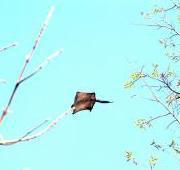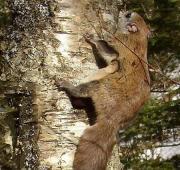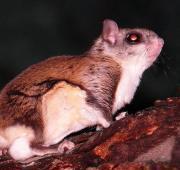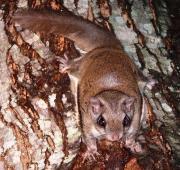 The flying squirrel is a medium-sized rodent, closely related to the squirrels found in woodlands and across grasslands around the world. Flying squirrels tend to be slightly larger in size than the common squirrel.
The flying squirrel is a medium-sized rodent, closely related to the squirrels found in woodlands and across grasslands around the world. Flying squirrels tend to be slightly larger in size than the common squirrel. Despite the name, flying squirrels cannot actually fly, although they can be airborne for a remarkable length of time. Instead of flying, flying squirrels move through the air by gliding (normally between the trees), with the longest recorded glide of a flying squirrel being nearly 90 meters.
Despite the name, flying squirrels cannot actually fly, although they can be airborne for a remarkable length of time. Instead of flying, flying squirrels move through the air by gliding (normally between the trees), with the longest recorded glide of a flying squirrel being nearly 90 meters.


Flying squirrels are omnivorous animals meaning that their diet is based on both plant and animal matter. The flying squirrel is a nocturnal animal, so it forages for food under the cover of night as flying squirrels are not able to easily escape the birds of prey that hunt during the day. Flying squirrels eat nuts, seeds, fruits, berries, insects and bird eggs.
Due to their small size, flying squirrels have numerous natural predators wherever they live in the world. Domestic cats, raccoons, snakes, birds of prey, foxes dogs and coyotes are all primary predators of the flying squirrel.
Flying squirrels are known to breed twice a year, in the early spring and again in the summer. After a gestation period of roughly 40 days, the female flying squirrel gives birth to between 2 and 7 baby flying squirrels, which are blind and naked when they are born. The baby flying squirrels develop fur and open their eyes when they are about a month old. The young flying squirrels begin to glide and forage with their mother when they are roughly 2 months old.

